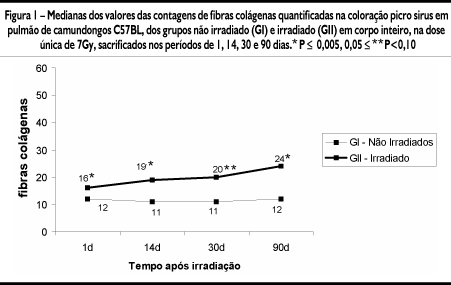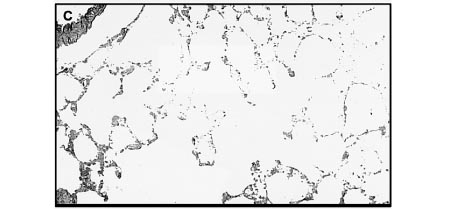PURPOSE: assess the latent and active TGFb1 localization in the lung, whether or not radiation induces latent TGFbeta1 activation, and the distribution of collagen fibers in the irradiated lung. METHODS: Thirty two C57BL mice were randomly assigned in two groups: GI (non irradiated animals) and GII (irradiated animals). The mice from GII received a single whole <FONT FACE=Symbol>¾</FONT> body radiation dose of 7Gy, using a 60Co source at a dose rate of 0.97 Gy/min. They were sacrificed by cervical dislocation at 1, 14, 30 and 90 days after radiation. RESULTS: The irradiated lungs showed: 1) vascular congestion and thickness of the alveolar septa 30 days and more intense 90 days after irradiation; 2) significant increase of collagen deposition in all time periods after irradiation; 3) weak latent TGFbeta1 activation 1 day and strong activation 14 days after irradiation in the bronchi and alveoli. Our results suggest that some bronchial and alveolar cells may have a role in the complex process of radiation-induced lung fibrosis acting as cellular sources of active TGFbeta.
Ionizing radiation; Lung fibrosis; Transforming growth factor b (TGFbeta)





